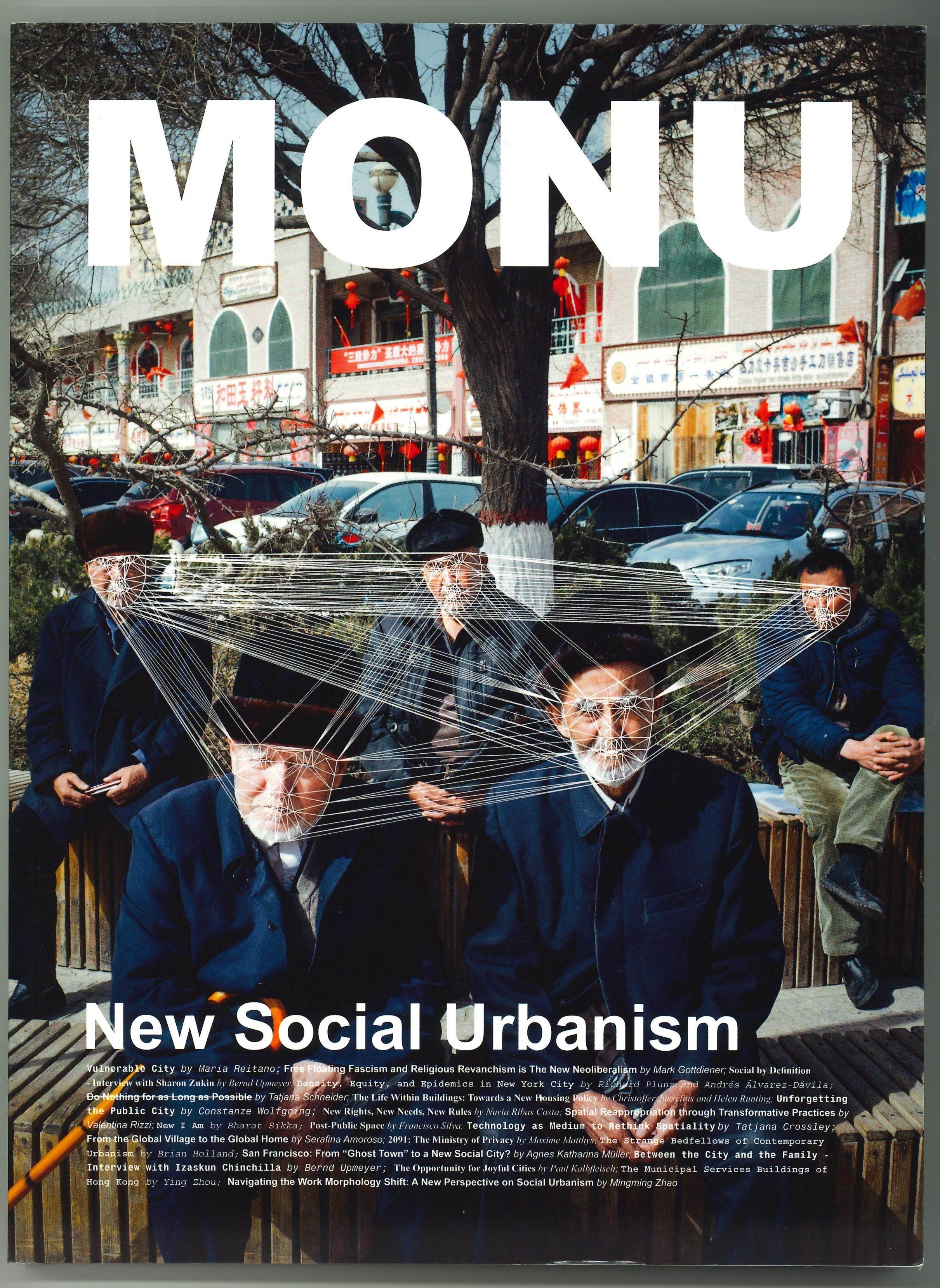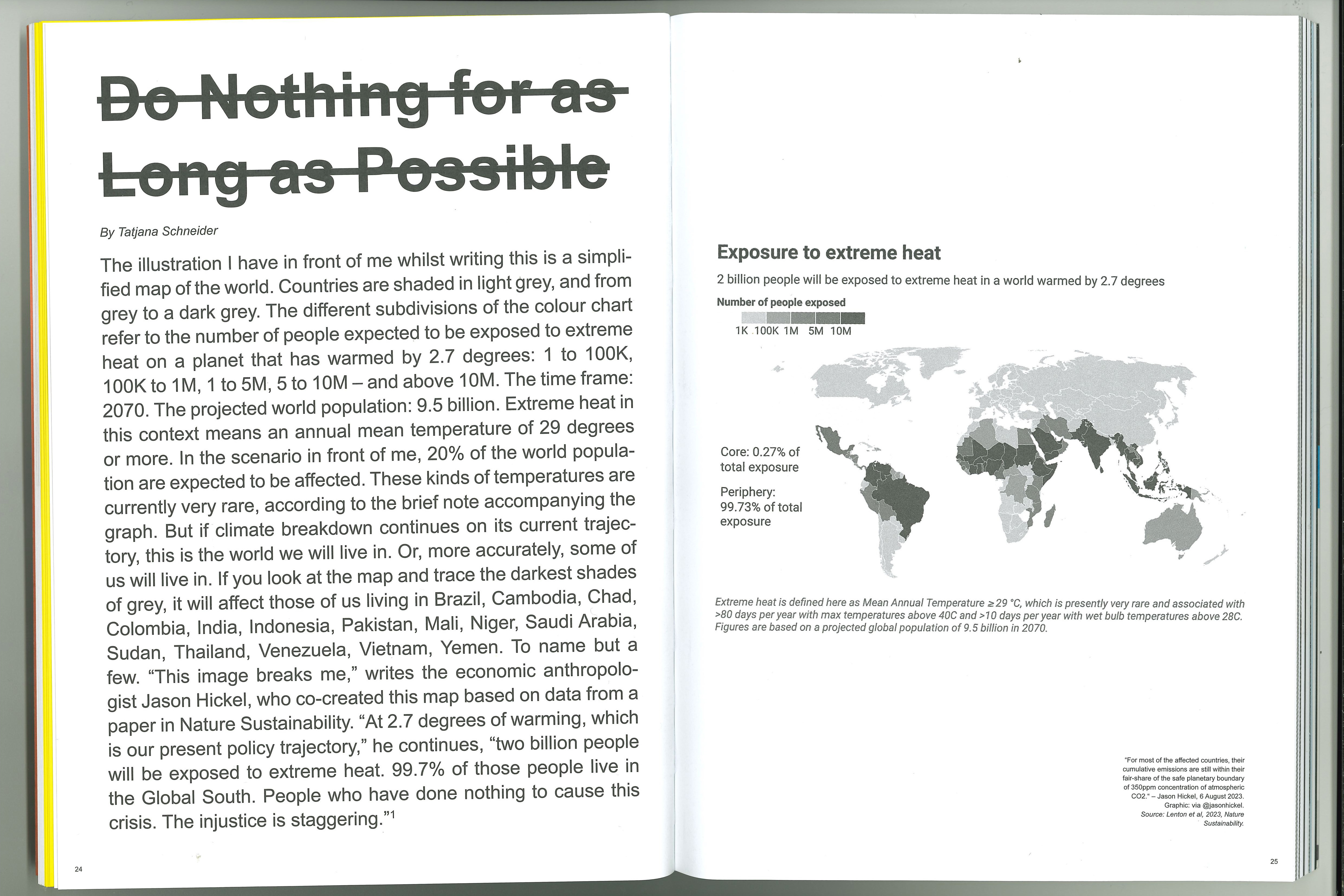Do Nothing for as Long as Possible

The illustration I have in front of me whilst writing this is a simpli-fied map of the world. Countries are shaded in light grey, and from grey to a dark grey. The different subdivisions of the colour chart refer to the number of people expected to be exposed to extreme heat on a planet that has warmed by 2.7 degrees: 1 to 1 00K, 100K to 1 M, 1 to SM, 5 to 10M - and above 10M. The time frame: 2070. The projected world population: 9.5 billion. Extreme heat in this context means an annual mean temperature of 29 degrees or more. In the scenario in front of me, 20% of the world popula-tion are expected tobe affected. These kinds of temperatures are currently very rare, according to the brief note accompanying the graph. But if climate breakdown continues on its current trajec-tory, this is the world we will live in. Or, more accurately, some of us will live in. lf you look at the map and trace the darkest shades of grey, it will affect those of us living in Brazil, Cambodia, Chad, Colombia, lndia, lndonesia, Pakistan, Mali, Niger, Saudi Arabia, Sudan, Thailand, Venezuela, Vietnam, Yemen. To name but a few. "This image breaks me," writes the economic anthropolo-gist Jason Hickel, who co-created this map based on data from a paper in Nature Sustainability. "At 2.7 degrees of warming, which is our present policy trajectory," he continues, "two billion people will be exposed to extreme heat. 99.7% of those people live in the Global South. People who have done nothing to cause this crisis. The injustice is staggering." [...]


